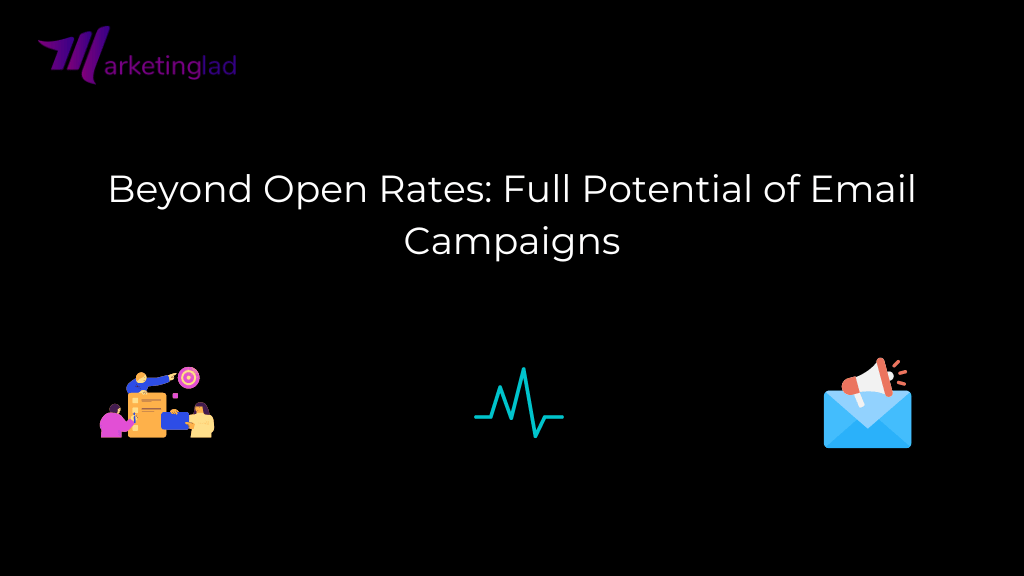If your email strategy relies heavily on click-through and open rates, you may face an unpleasant surprise in the evolving data privacy landscape.
With the introduction of regulations such as GDPR and CPRA and growing consumer demands for greater privacy protection. From tech giants, the way personal data is used is undergoing significant changes.
These changes don’t just impact digital advertisers but also have implications for email marketers.
As these shifts unfold, email marketing is directly affected, including the measurement of open rates. It has become essential for marketers to recognize the importance of measuring direct engagement to ensure success.
Adapting to this new reality is crucial to maintain effective email strategies while respecting data privacy and consumer expectations.
Privacy and Consumer Power: Redefining Marketing Strategies

Since 2018, over 75% of states have deliberated on privacy legislation, leading to the enactment of comprehensive state privacy laws in 10 states, with more states continuing to pass such legislation as time goes on.
While U.S. privacy legislation may not explicitly demand opt-in consent for email marketers like GDPR, the increasing number of U.S. laws requires even domestic and B2B marketers (as CPRA covers business contacts) to notice.
These laws can significantly impact email marketing strategies in ways that might not be immediately apparent.
Not only data privacy legislation, but consumer demands have also prompted significant changes in email practices.
Both have introduced platform- and consumer-side data privacy tools, like Google’s discontinuation of third-party cookie tracking and Apple’s Mail Privacy Protection.
These data privacy tools can unexpectedly affect email strategies in various ways:
- User-controlled features, like Apple’s Mail Privacy Protection, may falsely inflate email open rates.
- Security bots might artificially increase click rates in email reports.
- Marketing automation platforms could rely on third-party cookies for visitor tracking.
- Tools like DuckDuckGo’s email inbox could obscure interactions from marketing analytics.
Given the complexities involved, this article will focus on one crucial metric commonly used to measure email marketing success: the email open rate.
Debunking the Email Open Rate Myth

If your email success reporting heavily relies on email open rates, it’s crucial to immediately delve into your marketing automation platform. The impact of privacy tools on email open rates can vary depending on whether you are a B2B or B2C marketer:
- Apple’s Mail Privacy Protection affects both B2B and B2C marketers.
- Outlook’s peculiar method of calculating opens mainly affects B2B marketers.
- The emergence of DuckDuckGo’s privacy email inbox currently has limited impact on both B2B and B2C.
To start, you should investigate whether your marketing automation platform offers an out-of-the-box feature that allows you to view the email clients used by your recipients in the sent email report.
For example, Marketing Cloud Account Engagement (formerly Pardot), allowing you to observe the impact of Apple Mail Privacy Protection email performance.
If your marketing automation platform offers this feature, you should analyze different types of email. Such as newsletters and client communications, to understand the impact of various inbox clients on your email open rates.
Each inbox client will have a distinct effect:
- A high percentage of recipients using Apple Mail Privacy Protection will result in artificially inflated email open rates. This function forces recipients to force-open all marketing emails before sending them to the inbox. Causing recipients to “hide” their opens from your marketing automation platform. It becomes challenging to differentiate between an Apple force-open and a genuine recipient open.
- A high percentage of Outlook recipients may lead to artificially lower email open rates. Many organizations have Outlook configured to prevent the automatic download of images. Since most email marketing platforms record an “open” when a pixel (often an image pixel) is triggered. Outlook’s behavior can cause missed recipient opens if images are not manually downloaded or links are not clicked. For instance, a newsletter may be read and appreciated by a recipient without any interaction that triggers an open pixel.
It’s important to note that newer inbox clients like DuckDuckGo’s inbox, designed to “hide” email opens. Link clicks from marketers, may not be explicitly visible in your reports.
Such privacy-centric tools are becoming more prevalent as consumers seek ways to protect their data from marketers. We should anticipate the emergence of more email-based tools that allow users to conceal their interactions. Making it even more vital to consider moving away from relying solely on email open rate reporting.
From Inbox to Interaction: The Role of Automation in Open Rates

If the email client reports revealing a significant impact on the credibility of your open rate, the next crucial step is to assess any automation that uses email opens as trigger points.
Start by investigating if your marketing automation platform provides a report on automation that utilize email opens. This can help you identify any potential issues before conducting a manual review of your entire account. Keeping documentation of all automation is also advisable for future reference and to maintain best practices.
Maintaining documentation proves useful, especially when conducting customer journey exercises to avoid overwhelming recipients. With excessive emails from your brand or different service lines and sub-brands targeting the same recipients.
This practice becomes even more critical with larger teams working within the marketing automation platform. As it helps prevent situations where well-constructed automation is left running without clear documentation when employees transition to new companies.
Review all of your dynamic lists, automatic email funnels, triggered emails, and other automated procedures in the present circumstance. If you discover instances where email opens to serve as triggers. You’ve recognized the unreliability of email opens as a metric, consider using alternative data points, such as scoring, to ensure more dependable trigger-based automation.
Success Reimagined
If email opens no longer serve as reliable indicator of your recipients’ interest , shift focus to other metrics that provide valuable insights. Direct engagement is a crucial aspect to consider, irrespective of the impact on email opens.
One way to start reporting on direct engagement is by assessing the actions taken by recipients. Determine how many visitors engaged with the content you sent and took the desired action you intended.
Additionally, you can explore broader implications, such as increased website visits or overall revenue growth.
To gain more detailed insights, create a comparative report that examines accounts not on your email list. Understanding whether accounts that receive emails are more profitable than those that don’t ca to gauge success.
Furthermore, leverage tools like Google Analytics to track website or landing page visits through UTMs in your emails. Integrate data from your CRM to gauge interest from campaign members.
Consider integrating your account-based marketing tool with your email lists to identify accounts.
The key takeaway is to move beyond relying solely on email opens as the primary reporting metric. Prioritize the impact of engagement in your email program as the most crucial measure of success.
Emphasizing direct engagement allows you to gain deeper insights into your recipients’ interactions with your content.





